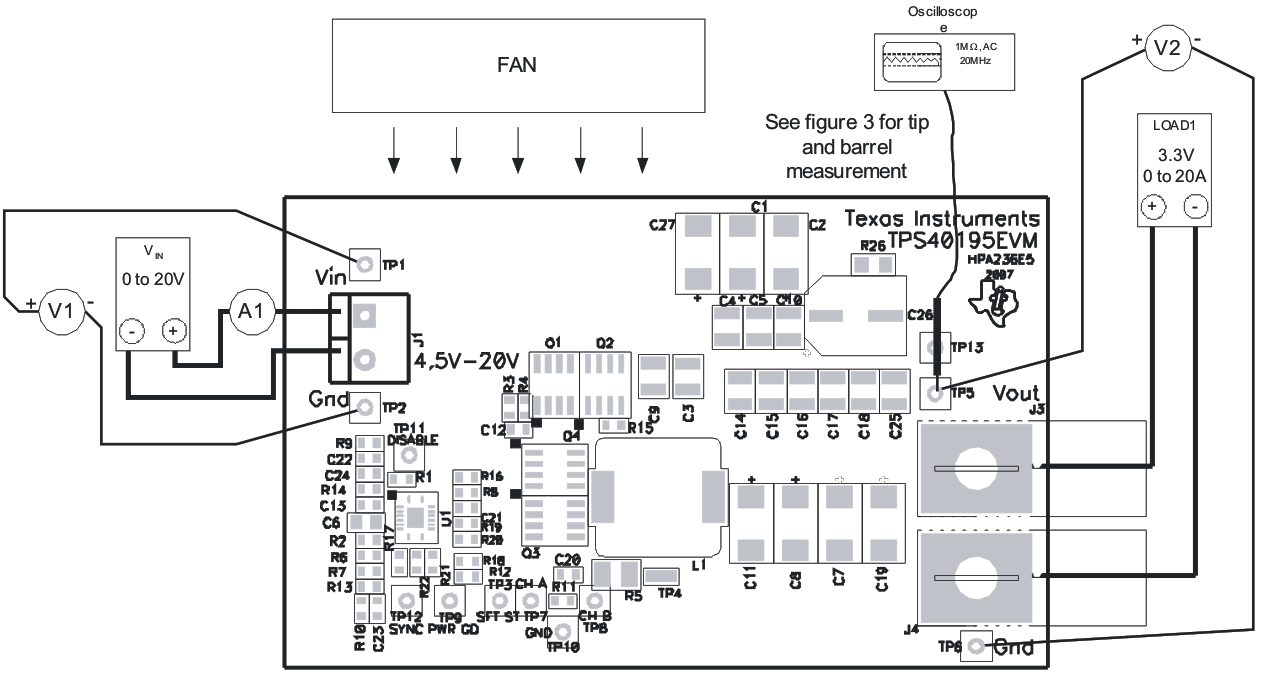SLUU297B December 2007 – January 2022 TPS40195
5.2 Equipment Setup
Shown in Figure 5-1 is the basic test setup recommended to evaluate the TPS40195EVM. Please note that although the return for J1 and J4 are the same, the connections should remain separate as shown in Figure 5-1.
- Working at an ESD workstation, make sure that any wrist straps, bootstraps, or mats are connected referencing the user to earth ground before power is applied to the EVM. Electrostatic smock and safety glasses should also be worn.
- Prior to connecting the DC input source, VIN, it is advisable to limit the source current from VIN to 20-A maximum. Make sure VIN is initially set to 0 V and connected as shown in Figure 5-1.
- Connect the ammeter A1 (0-A to 20-A range) between VIN and J1 as shown in Figure 5-1.
- Connect voltmeter V1 to TP1 and TP2 as shown in Figure 5-1.
- Connect LOAD1 to J3 and J4 as shown in Figure 5-1. Set LOAD1 to constant current mode to sink 0 ADC before VIN is applied.
- Connect voltmeter, V2 across TP5 and TP6 as shown in Figure 5-1.
- Place Fan as shown in Figure 5-1 and turn on, making sure air is flowing across the EVM.
 Figure 5-1 TPS40195EVM Recommended
Test Setup
Figure 5-1 TPS40195EVM Recommended
Test Setup